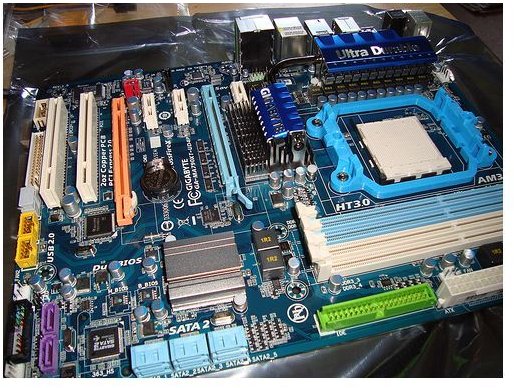Motherboard Troubleshooting Guide and Diagnostic Tools
Motherboard Troubleshooting Guidelines
Computer motherboards, like many electronic systems today, are tremendously complex. Without diagnostic aids and tools, it would be quite difficult for technicians to pinpoint computer errors and resolve those issues. Fortunately, computer owners and technicians can use beep codes, diagnostic lights and motherboard diagnostic cards to quickly troubleshoot hardware and configuration problems.
Trial and Error Troubleshooting
Without the aid of diagnostic tools, resolving computer problems would remain a trial and error process. However, sometimes it is necessary to tinker with various component and settings to precisely pinpoint a problem. While experienced computer technicians can usually tell what is wrong with a computer by observing the symptoms, it is not the most efficient way to resolve more technical errors.
System Error Messages
The most conspicuous of all the diagnostic tools are system error messages. These are displayed on the computer screen and are often quite descriptive of what is wrong. If the computer can actually display an error message, that is a good sign; at least key components such as the motherboard, memory card, CPU, power supply and display card still have some functionality left.
While an error code such as “CMOS Checksum Failure” may seem cryptic to the layperson, it may simply indicate that the CMOS battery (motherboard battery) is low and is causing the BIOS to loose its configuration settings once the computer is turned off. In another example, reconfiguring the boot sequence in the BIOS, may solve a “Diskette Boot Failure.”
Beep Codes Troubleshooting Aid
Beeping sounds are a basic motherboard troubleshooting and diagnostic tool. Motherboard beeps (a.k.a BIOS audio codes or beep codes) is a feature that is integrated in motherboards to help technicians and computer owners find specific hardware faults. Once the computer is turned on, listen to and write down the audio code. Then check it against the beep code table that the manufacturer provides. The code will give a general idea of what may be wrong.
Diagnostic Lights
Some computer manufacturers include diagnostic lights with their systems to help technicians troubleshoot computer problems such as hardware failures. For instance, Dell’s diagnostic lights are located on the back panel of supported computers. Diagnostic lights flash in specific patterns to communicate the current state of the computer or other issues. To make sense of what the diagnostic codes mean, the product information guide or user manual will need to be consulted**.**
Motherboard Diagnostic Cards
Motherboard diagnostic cards plug directly into a USB, PS2, ISA or PCI slot to aid in troubleshooting most computer faults. If the diagnostic card finds a problem, it will display a code that can be crossed checked against the accompanying documentation to see what the code means, and identify the source of the problem.
Proper diagnostic cards can cost hundreds of dollars, so this is not a cost effective solution for individuals who are seeking to resolve one or two computer issues. Nevertheless, it is these are often regarded as an indispensable tool by many computer technicians.
Summary
Without the aid of motherboard diagnostic cards, diagnostic lights and beep codes, computer technicians would, by and large, need to rely on their experience and trial and error to resolve computer hardware issues and configuration errors. In many cases computer problems can be easily fixed, while at other times a technician will need to be called to resolve the problem. In any case, we hopethat this motherboard troubleshooting guide has helped to highlight some popular diagnostic tools for resolving computer hardware failures and configuration issues.
Credit
Image: “Motherboard Troubleshooting Guide.” Mike Babcock
